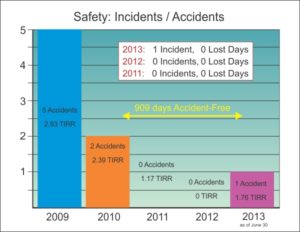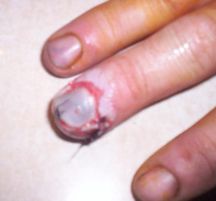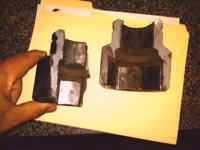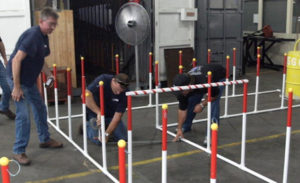Winter is definitely here across the U.S. Here are some points on surviving the cold that you can tailor to the particular circumstances of your workplace:
Winter Driving
* Keep in mind that while black ice can form anywhere the temperature drops below zero, the condition is more prevalent in some parts of the country than others. Find out about the weather and road hazard patterns in the area you will be traveling.
* Prepare any of your mechanics and subcontractors driving for the possibility of being stranded in bad weather. Remind everyone to carry winter clothing, including boots, gloves, and hats in their vehicles.
* If your mechanics don’t live in the snowbelt, winter driving hazards can be a big concern. You need to emphasize to them the special driving hazards and risks associated with longer hours of darkness and weather such as rainstorms.
Winter Hazards in the Workplace
But it’s not just the road that’s slippery in winter. Loading docks, stairways, equipment yards, parking lots, and other areas of the plant or facility can also become icy.
Adapt safety meetings to the particular fall hazards that are common to your work crew. Do they have to get in and out of vehicles in icy weather? Must they walk along loading ramps to do their jobs? Steps, stairs, ramps, and ladders are all more dangerous in wet or icy weather, especially during the night shift. Remember that moist skin can stick to freezing surfaces. Check your work-site for areas that could be a particular hazard in the cold weather and discuss them in your morning toolbox meetings.
Effects of Darkness
The winter solstice around December 22 is the darkest time of the year. Outdoor workers are likely to be affected most by the increased darkness. But anyone who arrives or departs from work in the dark also needs reminding about special safety concerns, such as increased risk of slips, trips and falls, and personal security risks.
Be cautious using outdoor lighting around utility or construction jobs where flammable gas may accumulate. It is importance to use light devices designed for decreased sparking.
The long dark winter can create or enhance symptoms of depression in employees, including lethargy, irritability, and forgetfulness. The depression can lead to increased use of alcohol and/or difficulty in relationships, which can further decrease employee productivity and awareness.
Early hours can also lead to dangerous fatigue; talk to the crew about getting enough sleep and coping safely with early shifts.
Make your safety talks address the particular risks cold weather creates on the specific tasks workers perform.
Cold Stress
Workers who are exposed to extreme cold or work in cold environments may be at risk of cold stress. Extreme cold weather is a dangerous situation that can bring on health emergencies in susceptible people, such as those without shelter, outdoor workers, and those who work in an area that is poorly insulated or without heat. What constitutes cold stress and its effects can vary across different areas of the country. In regions relatively unaccustomed to winter weather, near freezing temperatures are considered factors for “cold stress.”
Prolonged exposure to cold, even at temperatures well above freezing, can result in abnormally low body temperature (hypothermia). A body temperature that is too low affects the brain, making the victim unable to think clearly or move well. This makes hypothermia particularly dangerous because a person may not know it is happening and will not be able to do anything about it.
Cold stress is accelerated if a body part is exposed to water. Water conducts heat away from the body faster than air. Local cooling can shut down circulation in the capillaries under the skin, which can result in permanent damage such as chilblains, trench foot or frostbite. These effects can be experienced at temperatures as high as 60 degrees F.
Whenever temperatures drop decidedly below normal and as wind speed increases, heat can more rapidly leave your body. Wear appropriate clothing and protect sensitive areas such as hands, feet and face. Several layers of loose clothing will provide better insulation, especially if you alternate periods of exertion and rest. Wear a cap or rag under your hard hat. Stay in heated locations during work breaks, and limit outside exposure on extremely cold days.
Weather-related conditions may lead to serious health problems. So be prepared to cover up and stay warm.


 We’re embarrassed. We had our first recordable accident after 909 days (over
We’re embarrassed. We had our first recordable accident after 909 days (over Each year, workers suffer approximately 125,000 injuries that occur when body parts get caught between two objects or entangled with machinery. These hazards are referred to as “pinch points”. If you have ever slammed your finger in a door, you can appreciate the pain associated with this common type of caught/crush injury. The physical forces applied to a body part caught in a pinch point can vary and cause injuries ranging from bruises and cuts to amputated body parts and even death.
Each year, workers suffer approximately 125,000 injuries that occur when body parts get caught between two objects or entangled with machinery. These hazards are referred to as “pinch points”. If you have ever slammed your finger in a door, you can appreciate the pain associated with this common type of caught/crush injury. The physical forces applied to a body part caught in a pinch point can vary and cause injuries ranging from bruises and cuts to amputated body parts and even death. Beware Exploding Sockets
Beware Exploding Sockets At TGM, our motto is Safety, Quality, Production . . . In That Order! We currently have:
At TGM, our motto is Safety, Quality, Production . . . In That Order! We currently have: